The coffee extraction, the coffee extraction.
I. interpretation of extraction-related terms
30% of the ingredients in coffee beans are soluble, and these 30% contain organic substances that provide aroma and taste. These organic substances contain all the good and bad properties, so it is not that the higher the extraction rate, the better the taste and aroma. In addition, a moderate concentration is an important factor that can not be ignored for the overall taste.
(1) the method of concentration determination:
1. The refractometer (vst meter) measures the change of the refraction angle of the air in the liquid and converts it to get the tds reading in'%'.
Usage: 0.1% for water, 1.3% for coffee, 1.2% for tds (relatively convenient)
2. Conductive pen (tds pen) the measurement of the electrical conductivity of the electrolyte in the soluble matter in the liquid shows that the bound electrolyte accounts for about 10% of the total soluble matter, and the tds reading in units of 'ppm' is converted.
Usage: 100ppm for water, 1300ppm for coffee, and tds 12000ppm for coffee, 1.2% (relatively cumbersome)
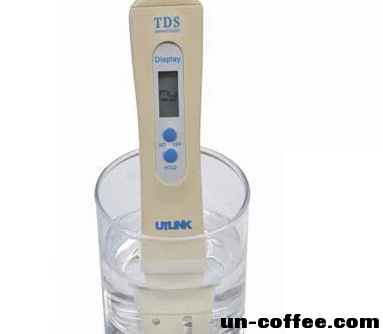
3. Evaporation drying: after the coffee liquid is dried, the weight of the soluble matter can be obtained. Combined with the total weight of the liquid, the concentration can be obtained (relatively accurate).
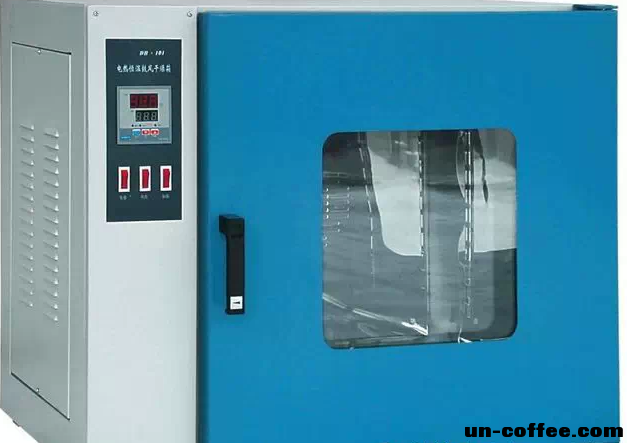
Note: with regard to the concentration recommendation, that is, the concentration recommendation of Gold Cup, SCAA recommends 1.15% SCAA and SCAE 1.45%.
(2) conversion of extraction rate:
1. Refractometer or conductive pen reading * Coffee liquid total weight / solid weight
2. The weight of dissolved matter / solid weight obtained after drying the coffee liquid.
Remarks: 1. Ppm is the abbreviation of parts per million, translated as part of per million, that is, parts per million (parts per million), or parts per million. 1ppm, for example, contains 1kg of solute in a solution of one million kilograms. Ppm is the same as the percentage (%), except that the percentage is larger than the percentage.
2. Among the three methods, the natural drying method is the most accurate, but the drying method requires high experimental environment; the other two conversion methods, because of the uncontrollable variables caused by different production methods, actually ignore the factor of coffee water absorption.
(3) the method of calculating the extraction rate by combining the specific coffee utensils.
For the convenience of calculation, it is assumed that the TDS of water is 0, of course, it is usually necessary to subtract the value of TDS of water.
1. Immersion type (French kettle, smart cup, Cupping, etc.)

Amount of water used * TSD (concentration) / coffee powder
For example: 240g (water) * 1.2% Universe 15g 19.2%
2, follicular type (such as hand flushing, CHEMEX, Philharmonic pressure, flannel, etc.)

Weight of coffee liquid * TSD (concentration) / amount of coffee powder (e.g.: 240g (coffee liquid) * 1.2% 15g coffee 19.2%)
Or (amount of water used-coffee powder absorbs water) * TSD (concentration) / coffee powder quantity
Note: coffee powder absorbs water, and the theoretical value is twice the weight of coffee powder.
For example, [280g (water)-30g (coffee powder absorbs water)] * 1.2% Coffee 15g 20%
3. Espresso
Before testing TDS, espresso needs to filter the suspended particles insoluble in water in the liquid. (if there is no special filter equipped with VST concentration meter, filter paper can be used instead)
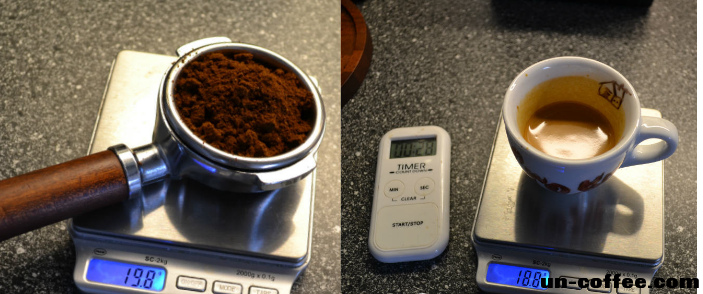
Weight of coffee liquid * TSD (concentration) / amount of coffee powder (e. G.: 36g / 10g / 18g / 20g)
II. Extraction and extraction equilibrium
The reasonable extraction range was set by ebf, and the extraction results were tested by tds. Combined with the grinding scale and the ratio of gouache to powder to modify the results, it is the quality control system of most knowledge-based barista when making espresso. Under this seemingly rigorous operation process, will there be loopholes?-- extraction uniformity is a monitoring blind area that is easy to be ignored.
Uniform means that the quantity distributed or distributed in each part is the same. Combined with the extraction rate to understand the uniform extraction, that is, under the same extraction opportunity, all the coffee particles involved in the extraction get the same extraction rate. Based on the relationship between grinding and extraction in the previous article, we can use the following picture to illustrate the comparison:
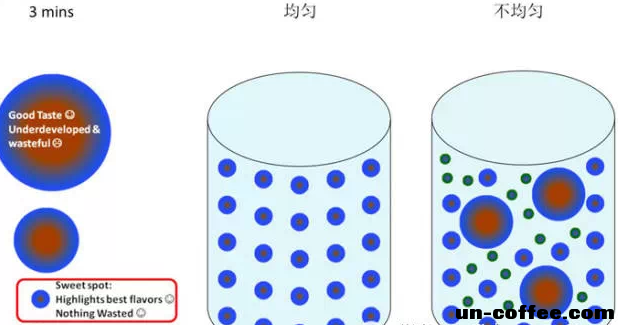
As shown in the figure, the red frame is the 'perfect particle size' that can bring the best extraction performance. There is an equal amount of hot water in the two cups, and the "perfect particle size" particles are added to the left cup, and the uniform and appropriate extraction results will be obtained after 3 minutes, while the non-uniform and biased extraction results will be obtained by adding "wayward particle size" particles to the right cup. Will such a conclusion have any practical significance in daily operation?
Let's take a look at the repertoire of XOXO Little Theater today.
Since I heard that the quality of coffee can be tested by tds values, friends are no longer worried about making good coffee. In the bar, there can be no less concentration meter, table scale, thermometer, stopwatch and even calculator! tds reading and extraction rate conversion are handy for everyone. For a time, the world is in harmony, singing and dancing are peaceful.
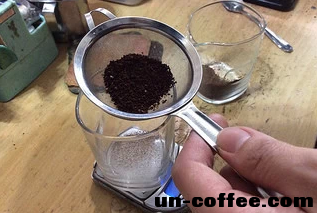
One day, the strict boss used the consistent production standards in the store to produce fisher coffee gold manning for an old customer with Philharmonic pressure. Weighing, temperature measurement, timing, all the operation is like running water. Tds 1.25% extraction rate 20%, double stick! The boss, full of joy, watched the guests drink their coffee with smug eyes. A moment later, an unexpected comment made him ponder-- this coffee is not the same as that made by your master of technology.
Is it the guest's problem, or is there something wrong with the production? The tech gentlemen here may already have their own answers. Before we reveal it, let's start with the extraction rate of this cup of coffee and make some simple analysis. The extraction rate of coffee is 20%. In the most straightforward words, 20% of the ingredients in coffee are taken away by water. Suppose that 10g ground coffee is made up of 10000 particles of the same size. In that case, if each of them contributes 20% of its own, the total extraction rate can reach 20%; if the particles vary in size, 5000 larger particles contribute 15% of their own, and the other 5000 smaller particles contribute 25% of their own. The total extraction rate is 20% composed of insufficient extraction and extraction transition. At this point, the flavor of the coffee will become relatively negative. Because the concentration meter can only measure the tds of coffee liquid, but can not monitor the extraction degree of each coffee particle in the extraction process. Therefore, uneven extraction will lead to seemingly correct data, but there are hidden negative results.
The technologists are well aware of the relationship between particle size and extraction, so they will use screening to improve the consistency of particle size before each production. In the process, stir the soaked coffee. In the case of not changing the water temperature as much as possible, make each coffee get the same extraction opportunity as far as possible. In this way, a cup of coffee with correct data and correct flavor will be presented to the guests. The myth of the boss has also been solved!
Because of the fixed ratio of water to powder in immersion extraction, the problem of uneven extraction can be improved by a very simple method. However, if we enter the pass-through extraction process, due to the increase of uncontrollable factors in the whole process, screening may not be so effective.
So, in the production of espresso, what on earth affects the extraction uniformity? In the next article, I will start with the extraction environment and try to find out the answer.
If 18g ground coffee consists of 18000 particles with a diameter of 1mm, then the most primary structure of this "perfect environment" may be like this: a powder bowl with a diameter of about 15cm and a height of about 1mm, all coffee particles can be flattened, thus minimizing the loss in the extraction process. The brewer that matches this powder bowl has 18000 outlet points, which perfectly corresponds to the position of each particle in the powder bowl. Let's illustrate it with a picture like this:

As shown in the figure, once the extraction starts, water at the same pressure and temperature acts on all coffee particles at the same time. Under this structure, the extraction time becomes very short. Assuming that 36g can be extracted in 1 second, then the red frame can bring the best particle size with an extraction rate of 20%. Since all the conditions are relatively consistent, this will be an almost absolute uniform extraction.
Of course, the above are all my own whimsical assumptions, and in reality there are no devices that can meet these conditions. As far as the results in the cup are concerned, we will not be able to make such an extraction attempt and make a horizontal comparison. Of course, if the equipment manufacturers can conduct relevant experiments and provide effective data, we will have a more direct and accurate answer to the question of uniform extraction and performance in the cup.
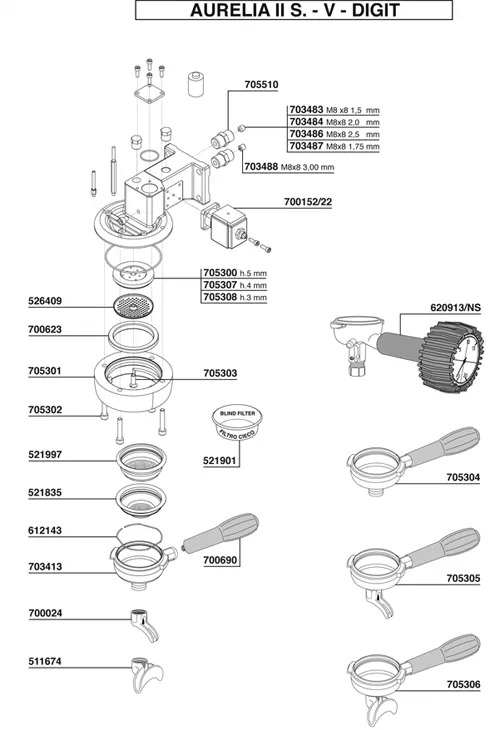
The courage to face reality is the key quality that a knowledge-based barista must have. Only by finding a solution to the problem from reality can we reflect the potential and determination of the new generation of coffee people. Let's just go back to reality and take the simonelli brand with high market penetration as an example to see where the problem lies. Most models of simonelli powder bowls are about 58mm in diameter and 25mm in height. When the powder bowl is filled with coffee, hot water permeates pressed powder from top to bottom during the extraction process. With the increase of the concentration of water, its washing power will become weaker.
Therefore, no matter how the particle size, the number of pores in the filter bowl and the extraction pressure change, when the extraction is finally completed, the extraction rate is composed of relative extraction deficiency and transition. We can improve the effluent consistency by changing the water distribution network, and we can also improve the water consistency by changing powder bowls, cloth powder, filling pressure and so on. But the uneven extraction process can not be changed.
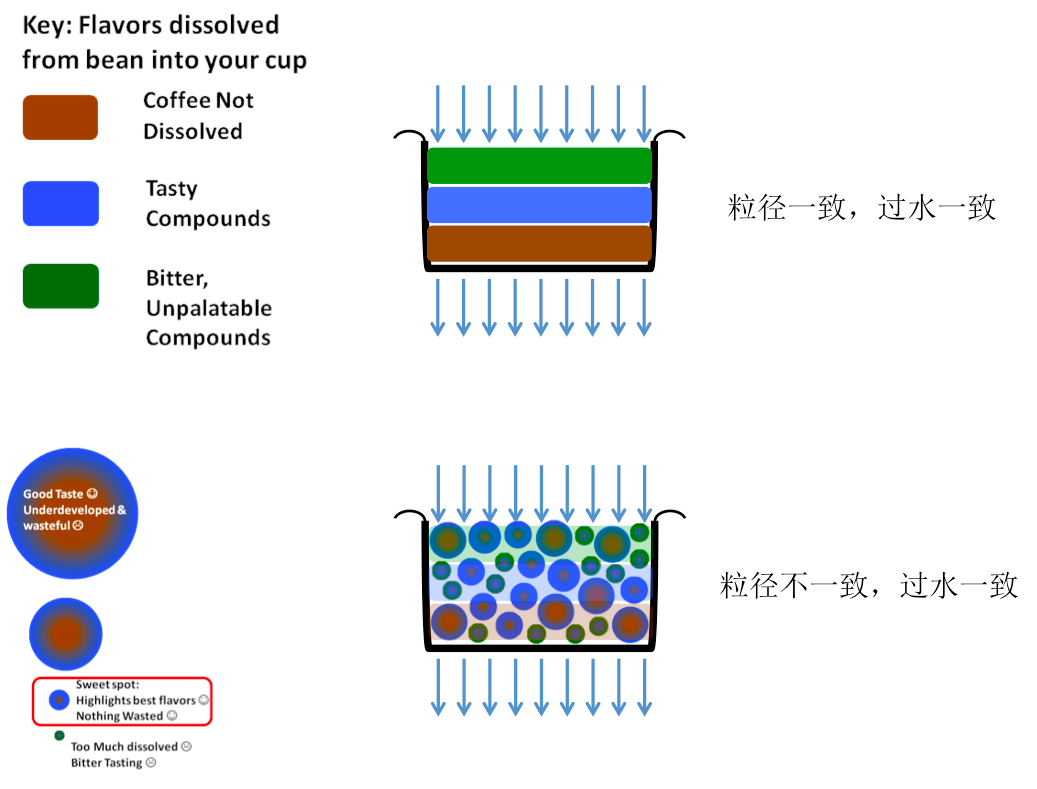
Different particle sizes bring different extraction rates, and a new flavor performance is formed by different extraction rates brought by different particle sizes. In this way, an extraction process that seems to be full of infinite unknown will become relatively purposeful and controllable. In other words, we can use different sizes of coffee to combine the extraction rates at will until we find the cup we want. Matt perger achieved his goal with the special particle size of ek43; Zhao Jiabao used sieving to make ek43 more accurate for its use. Although this may only be part of their whole extraction concept, from the point of view of particle size combination, they have taken the first step in practice and are ahead of their competitors.
Seeing here, the barista watching the competition may point out, if the method of particle size combination works so well, why didn't this year's wbc champion use it? From a technical point of view alone, this problem will be unsolved. Because, when the result is unknown, the method is not right or wrong, only different. If we want to draw a conclusion on this proposition, it can only be said that under the same competition purpose, everyone's different understanding of the game brings different ideas and methods.
Whether on the court or at the bar, as a barisa, there may be variables in everything but ourselves in the coffee-making process. The moment we pick up the handle, you can choose to believe in everything the existing conditions bring, or you can choose to believe in your own guesses about the unknown. As a result, it should be handed over to each guest who raises the cup for evaluation.
III. Espresso extraction and correction
(1) EBF
Today, with the increasing concern of the boutique coffee industry, as an objective and real data, the impact of coffee extraction rate on the performance of the cup has been recognized by most knowledge-based baritsa. Under this premise, it means that we can combine the variables that affect the extraction rate and analyze in depth how to achieve appropriate extraction by modifying the extraction rate.

1. Reasonable range
For a cup of erpresso, 30ml in 25 seconds was once the golden rule that everyone kept in mind. However, in the continuous exploration and attempt of boutique coffee, a group of reformed knowledge-based barista appeared among coffee people, who almost completely abandoned the restrictions and interpreted espresso with their own understanding of coffee.
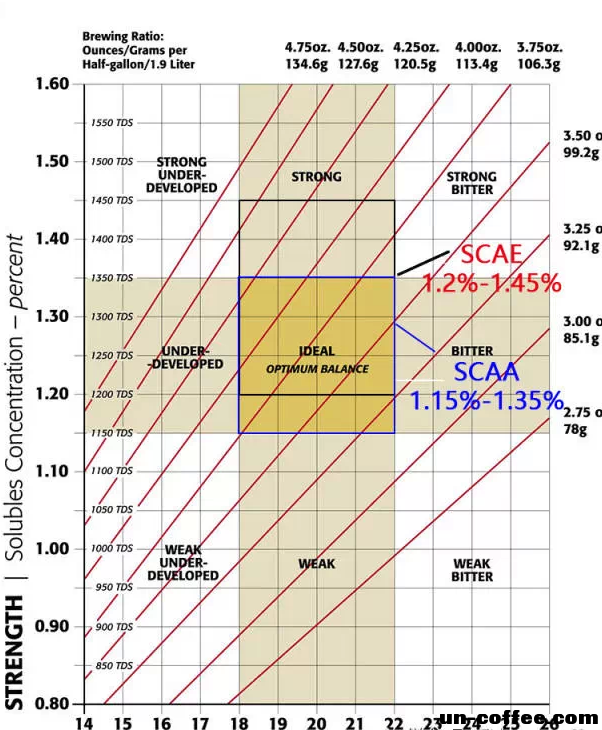
The Golden Cup Rule is the most authoritative industry standard at present. This standard is widely recognized precisely because it is easy to understand and apply. A coffee extraction rate of 18% to 22% can lead to the aroma and taste of coffee. Corresponding to different proportions of water, it can satisfy the taste preferences of different people in terms of concentration.
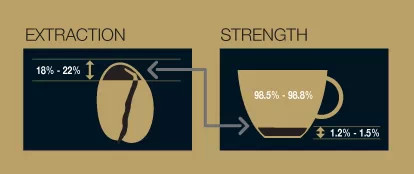
How different are the so-called taste preferences? The two major guilds said: tds=1.15%~1.35% (SCAA), 1.2% and 1.45% (SCAE).
There is really no restriction on the concentration range of espresso in the Golden Cup rule, as long as the extraction rate is appropriate, the concentration is up to me!
2 、 EBF
EBF= Espresso Brew Formula, that is, the ratio of coffee powder to coffee liquid.
At present, the extraction principle of all Italian coffee equipment on the market is to carry out through-type extraction under pressure. In pass-through extraction, the concentration decreases with the increase of extraction time (extraction rate). Is it a bit of a mouthful here? Then imagine that if we want to maximize the extraction rate of a pressed powder to 30%, all we can do is to keep extracting until the water coming out of the handle is pure water. So, at this time, is the coffee concentration in the cup lower than the extraction rate of only 20%? On the other hand, a cup of espresso with relatively high concentration will have a relatively low extraction rate.
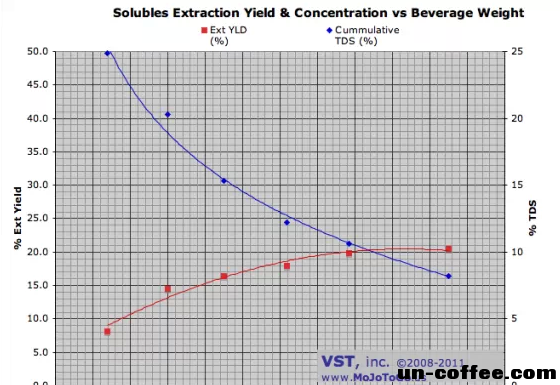
Therefore, our colleagues have done a very useful data collation, probably summed up the 'typical' espresso powder, coffee liquid ratio, both ebf50%. For example: powder 18g: liquid 36g. Pay attention! It is typical of typical, not standard standard.
3. EBF correction
In the reasonable extraction range of espresso-18%-22%, to ensure the complete embodiment of aroma and taste, the typical espresso,ebf can be controlled at about 50%. If it is atypical espresso, it depends on personal preference and equipment performance!
In the work, EBF can be corrected by "grinding coarse and fine grinding", "adding some powder, reducing powder", "more extraction point, less extraction point", "more water release, less water release".
EBF can help you decide when to grind, when to adjust the amount of powder, and when to control the flow of coffee.
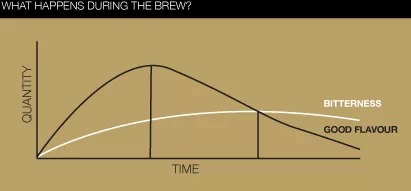
EBF < 40% = low concentration, high extraction rate, bitter and light (e.g. 18g powder, 45g coffee liquid, adjust taste direction)
EBF > 60% = high concentration, low extraction rate, high acid concentration (e.g. 18g powder, 30g coffee liquid, adjust flavor direction)
(2) Grinding
The thickness of the grinding determines the contact area between the coffee and the book, thus effectively changing the coffee extraction rate. From the perspective of barista, it can be understood as a flavor correction method in the process of coffee extraction:
Under the same conditions, relatively fine coffee particles are easier to be extracted than relatively coarse coffee particles.
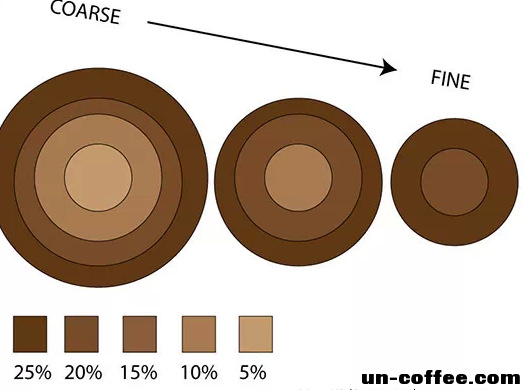
The horizontal axis in the picture can be understood as time, and the longitudinal axis is the particle size. If brown is regarded as insufficient extraction, green is the transition of extraction, and blue is the ideal extraction.
Just imagine, boiled potatoes in a pot of boiling water, the whole potatoes, potato pieces, shredded potatoes, must be cooked first. Of course, if a whole potato is boiled, the longer it takes to cook, the more thoroughly it will be cooked. From the point of view of coffee, 10g coffee is put into 200g water, after the same time, the appropriate particle size can bring the appropriate extraction rate. Similarly, when the particle size is the same, the extraction rate is related to the extraction time.
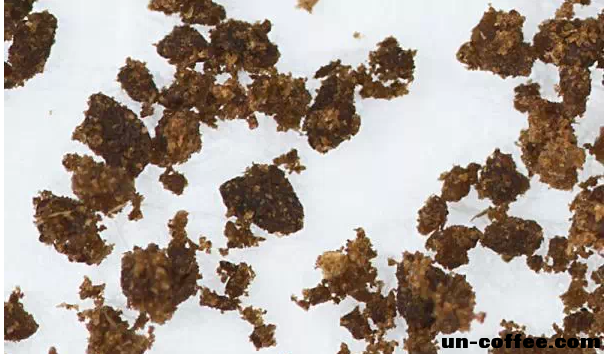
In fact, grinding, as a flavor correction method, is easy to master in immersion extraction. However, in pass-through extraction, many barista make mistakes in correction because of the relationship between time and extraction quantity.
For example, a store sets the extraction-18g in;36g out-based on the ebf 50% of a typical espresso. The grinding scale corresponds to the usual 28 seconds. Raise your glass and drink. Savor it carefully. The barista thinks that this cup of espresso can taste better, but the flavor may only develop to the second stage, the extraction is insufficient!
First of all: fine grinding, or 18g in,26s 27s 28s. . It will be more than 30 seconds, and the amount of extraction is less than 36g! The river was cut off in time to save the extraction time. Raise your glass and drink. Savor it carefully. Not as good as the first one! Combined with the trend of extraction time, it is considered that the extraction is excessive!
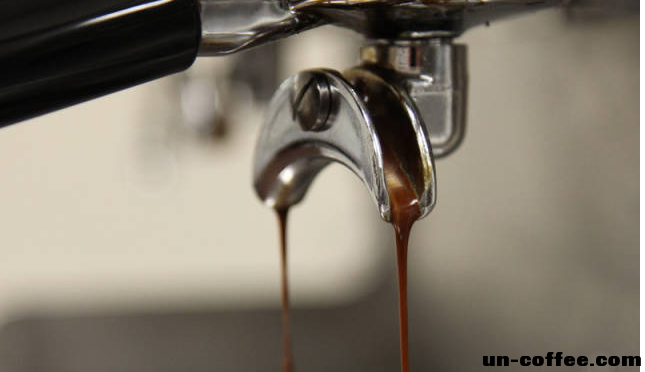
Barista, who understands the conversion of the extraction rate, may have seen the problem-such adjustments and conclusions are completely meaningless! Because in the case of no concentration meter, we can not get the tds reading, nor can we calculate the extraction rate! Excessive extraction and insufficient extraction can only be said to be subjective and completely unconvincing.
Let's help the barista together, or 18g coffee. When the grinding scale is changed, the relationship between the two variables we will get is
1. Ebf 50%, the extraction time is prolonged.
2. The extraction time remained unchanged for 28 seconds, and the ebf value increased.
In pass extraction, the change of ebf will also correspond to the change of extraction rate. Therefore, when we decide to modify the extraction rate by adjusting grinding, ebf can not be changed. Otherwise, the extraction result will become uncontrollable. After understanding this truth, my mother no longer has to worry about the extraction time of the boss. Grind it with fine grinding and continue with 18g in,36g out. Combined with the previous extraction results, finally find the performance you want in the cup.
At this point, the conclusion of grinding modified extraction rate has gradually become clear.
With the same amount of extraction, the smaller coffee particles is equivalent to the greater extraction ability of water acting on coffee particles, and the extraction rate will also be increased. It should be noted that while adjusting the grinding, the ebf can not be changed because of the change of extraction time, so that the result is uncontrollable.
Let's continue to look at the essence through the phenomenon. today, with the popularity of more and more high-performance equipment and advanced instruments, as barista, we can not be dominated or even kidnapped by data. When you want to make an espresso, you don't need to buy a high-end device or a densitometer right away, but do as much as you can-make the results manageable.
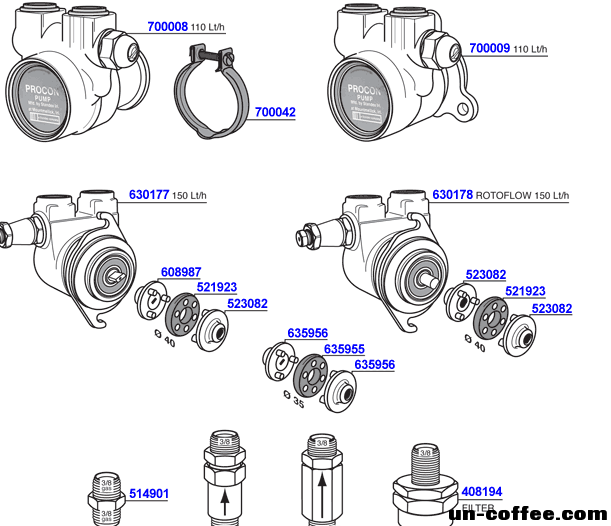
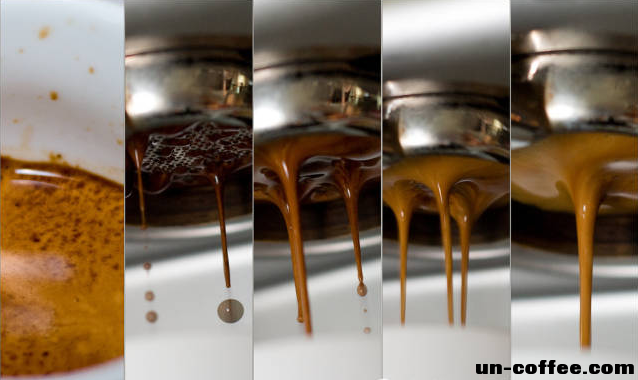
Source: coffee Life Network
Important Notice :
前街咖啡 FrontStreet Coffee has moved to new addredd:
FrontStreet Coffee Address: 315,Donghua East Road,GuangZhou
Tel:020 38364473
- Prev
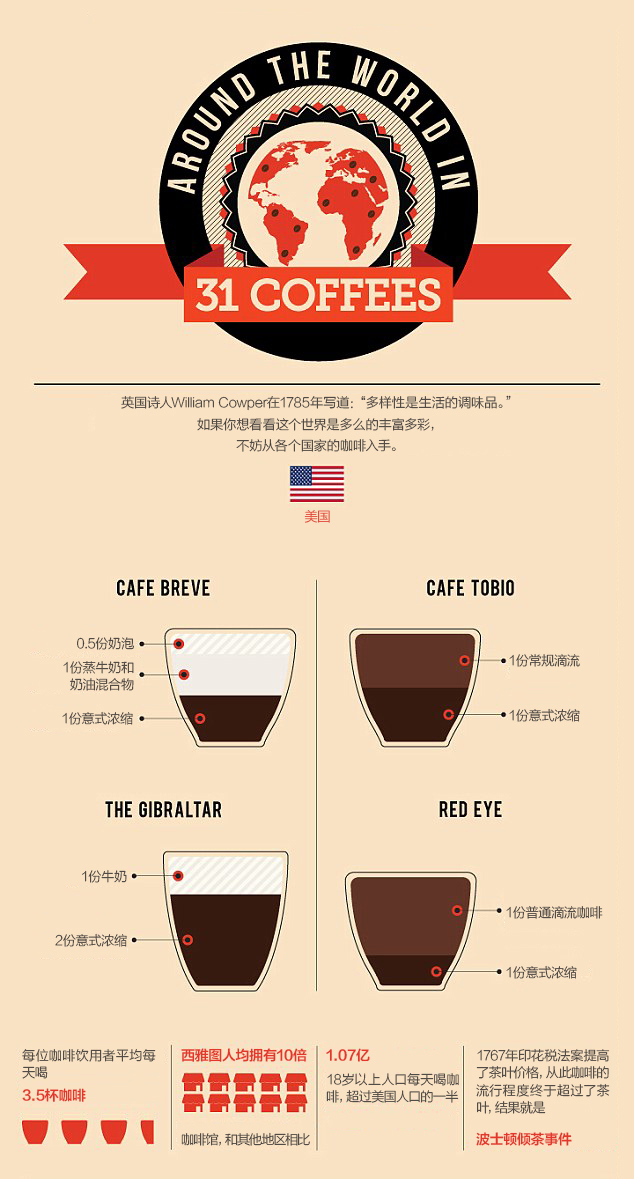
31 Common Coffee Types in the World
If you want to drink coffee after you leave the country, you must be mentally prepared first. Even if you call it the same name, the composition of the coffee may differ by a hundred thousand miles! If you don't understand the difference, you'll have to compromise: Give me something hot, caffeinated, and drinkable, and that's it. A British travel website that combines the names and ingredients of 31 common coffees from around the world
- Next

The world is big, but the world of coffee is small-Minipresso GR experience
Extreme fruit player: glb1031 participated in the evaluation of extreme fruit for the first time. Thank you for bringing me such a good product. It is a great honor to participate in this evaluation activity. First of all, let's talk about my understanding of coffee. Maybe I have a lot of nonsense. I just want to share some of my knowledge about coffee here. The first contact with coffee was in junior high school and high school. At that time, I often had to stay up late to study or play games and open coffee.
Related
- What is the meaning of lactic acid fermentation with coffee bean treatment?
- How to judge the state of foam by sound?
- How does the latte pull out the unicorn pattern? Come to get for a little trick to improve the flower pull!
- Will flower pulling affect the taste of the latte?
- Do you know the history of coffee?
- The difference between honey treatment and sun washing what is raisin honey treatment?
- What kind of milk can a novice use to make coffee foam to keep the foam longer? The correct method and skills of milking tutorial sharing
- Why do washed coffee beans taste sour? Flavor characteristics of washed Coffee
- Introduction to the skill of how to practice the size and height of water injection around the circle of hand-brewed coffee
- How do beginners practice coffee flower drawing from scratch?

